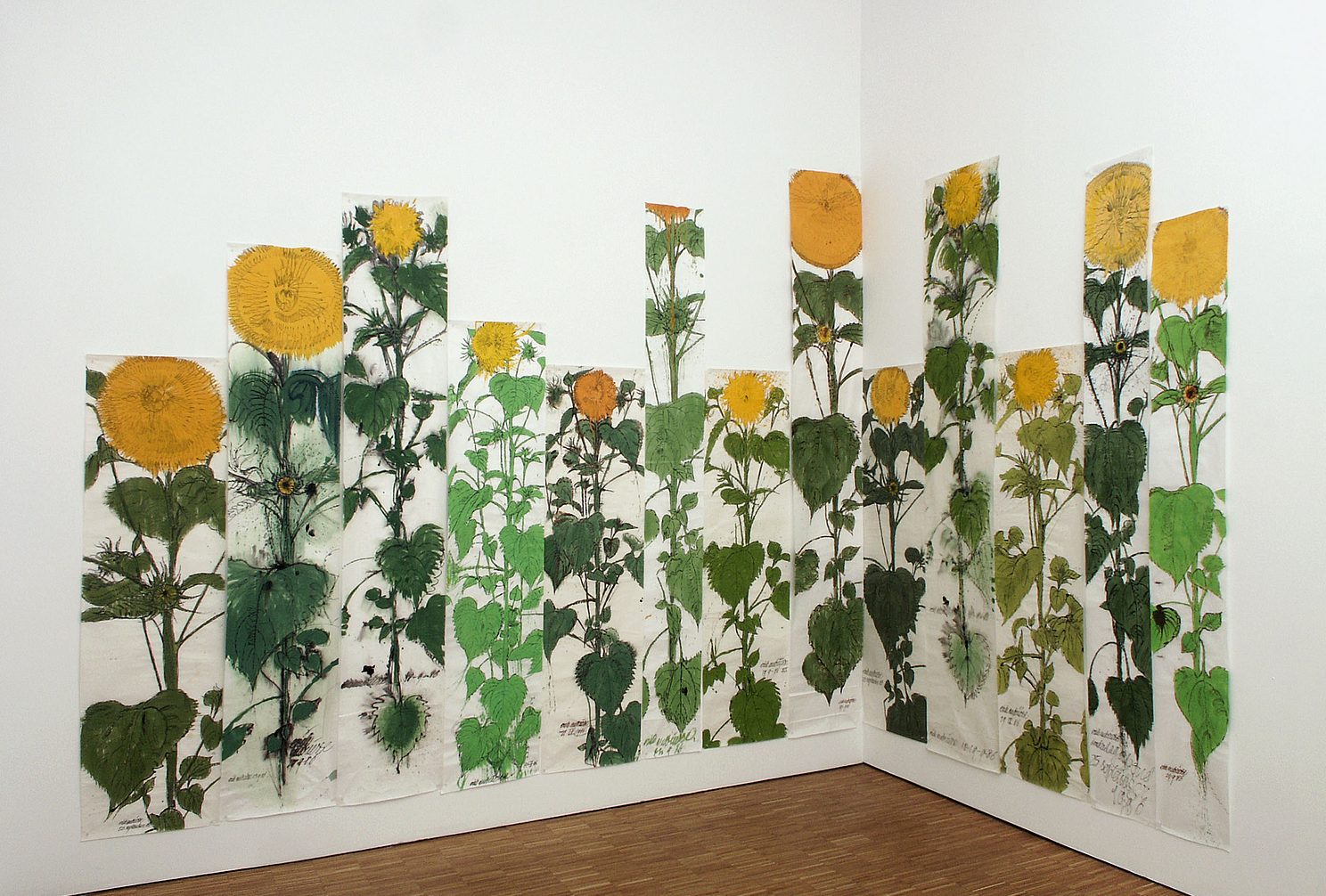Erik Andriesse
works on paper
17 May - 14 Sep 2003
Ten years ago the artist Erik Andriesse (Bussum 1957 – Amsterdam 1993) died at a young age. A spectacular career and an impressive oeuvre were brought to a thoroughly unexpected end. Now Erik Andriesse is being remembered with exhibitions at the Gemeentemuseum Den Haag (paintings) and De Pont (drawings) and with a publication belonging to a series of monographs on Dutch artists. On this reunion his work appears to have lost none of its strength and vitality.
His talent noticed at an early stage, Erik Andriesse has his first gallery exhibition by the age of fifteen. Being labelled as a prodigy does not discourage him but rather fortifies his belief that he should measure himself in terms of the predecessors and contemporaries whom he admires—Melle, Carel Willink and Raoul Hynckes for their figurative skill, Picasso for his vitality, Floris Verster for his studies of nature, as well as Penck and Lüpertz for a certain unruliness. In this spirit of artistic rivalry Andriesse develops his masterly execution of line and a great sense of color and compostion. The urge to explore and experiment is very evident in the series of works that he produces. Frequently he draws his subjects in dozens of versions (many times all in one day) and comes up with various combinations of visual elements.
During and after his time at Ateliers ’63 (1975-1977) Andriesse spends a brief period creating abstract compositions involving painted wooden boards and fruit-juice prints on paper. Despite their abstract quality, these compositions soon reveal the forms of his favorite subjects—flowers and animals.
Andriesse always regarded nature as his greatest teacher, and his tribute to it is displayed in the vitality of his work. With him the stages of blossoming and decay are no ‘vanitas’ symbols; even the skulls and sketelons are not macabre but sooner attest to a cheerful relativizing of our mortality.
Sunflowers and amarylisses are among his favorite subjects, but lilies, orchids, poppies and magnolias are also rendered in their full splendor. Paint that spatters and drips across the canvas provides the image with considerable dynamics. Andriesse is a fervent colorist, and the flowers lend themselves outstandingly well to such explosions of color. He seems deliberately to seek the limits of aesthetic seduction and tasteful refinement. The visual experience is essential to Erik Andriesse. He is interested in conveying a message or telling a story to a lesser extent than many other artists of his generation. Although renewed concern and appreciation for figurative painting during the 1980s create a context for his work, this does not lead to the use of symbolism, quotes or references as it did with many of the ‘new painters’ of that time.
In view of his choice of subject matter, it is fitting that Andriesse is granted an exhibition at the Van Gogh Museum in 1988. During that same year, he receives the Prix de Rome. While staying on the island of Bonaire, he becomes fascinated with the whimsical shapes and brilliant colors of marine life in the tropics. This gives rise to works in which crabs, losters, shells and turtles are depicted. The most difficult forms and patterns seem to provide the artist with the greatest challenge to his drawing skills. Even so, exact representation is never an aim in itself for Andriesse; his interest lies more with the unexpected compositions that he manages to create with his colorful images. That interest becomes increasingly evident with the countless works involving skeletons which he produced during and after a period of drawing and painting at Amsterdam’s Zoölogisch Museum in 1990. At first he meticulously studies the complex skeletal anatomy of humans and animals, but as soon as he gains an understanding of this he proceeds to make lively compositions of all these skeletons. The culmination of this is undoubtedly the immense painting Dode dierentuin from 1990/91, in which the skeletons of a giraffe, a lion, a crocodile, a monkey and a parrot make up a bizarre sort of parade together with a number of human skulls.
Andriesse produced hundreds of studies of skulls. As early as 1986, at Museum Fodor in Amsterdam, he had exhibited a group of twenty-five skull studies, all of them having a different appearance by way of color, form and composition. It is as though he wishes to counteract the anonymity of death by giving all of the skulls individual characteristics and, in doing so, restores to them some degree of life.
Actual portraits, on the other hand, were never made by Erik Andriesse to any great extent. Only portraits of a few friends and members of his family were done by him. Among these are his girlfriend Liesbeth and other artists who were friends, such as Marlene Dumas. Most of the portraits from his immediate surroundings were, once again, those of an animal—his dog Igor.
In 1992, in connection with a sojourn at the European Ceramic Work Centre in Den Bosch, Erik Andriesse begins to create ceramic work. His high level of productivity soon leads to series of plates and vases into which he playfully incorporates motifs of animals and skeletons. Several examples of these have been included in the exhibition at De Pont.
The publication Erik Andriesse has been written by Robert Jan Muller.
The exhibition at the Gemeentemuseum Den Haag will be held from May 17 through August 24.
